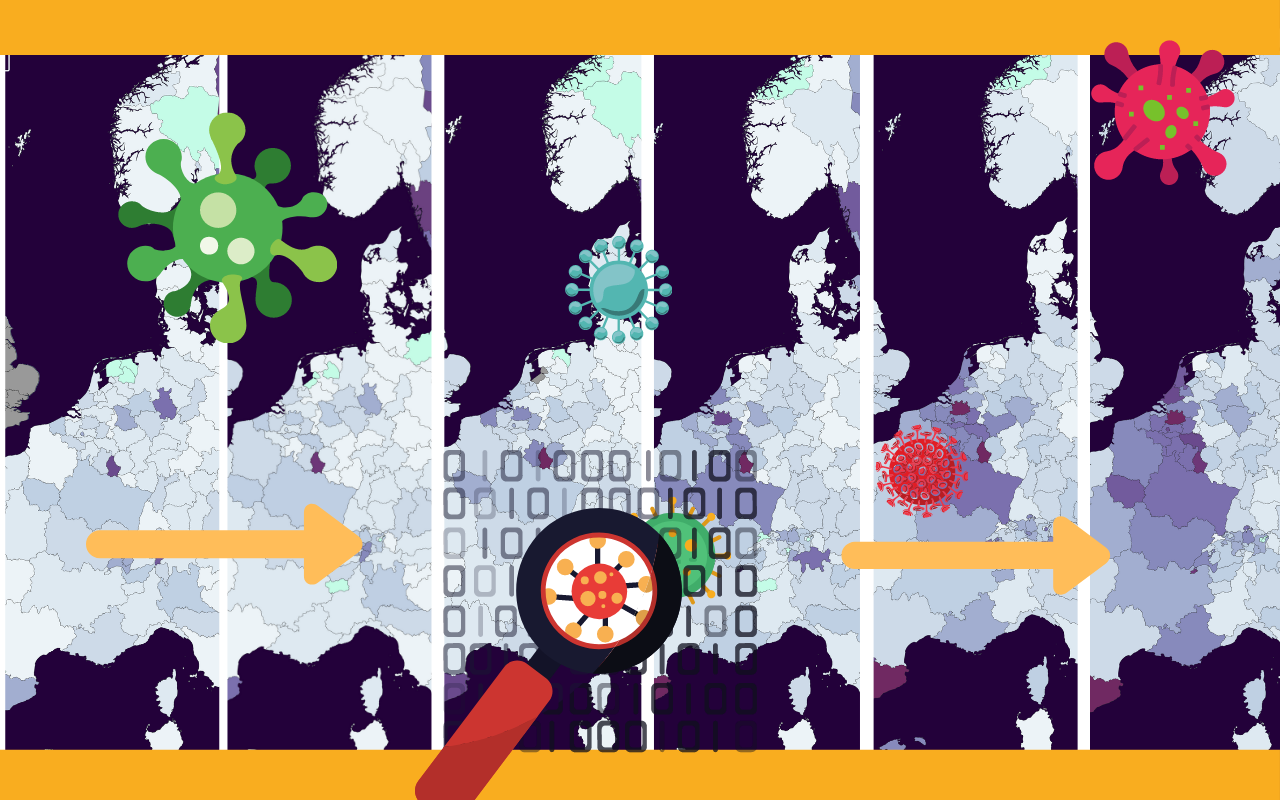
Covid-19 returned to Europe in the first week of August. After a relatively quiet month of June and a July that was dominated by new waves, the figures for the first week of August most resemble those of last spring.
Whether you call this a second wave or an extension of the first wave, doesn’t matter: the pandemic is back in Europe. This started in the first weeks of July in Spain and later also in Belgium, but is now spreading almost everywhere. Already last week we noticed the return of the virus, now the pace is increasing as well.
New peaks have also been reached now by France, the Netherlands, Great Britain, Denmark, Austria, and the Czech Republic. This week’s subnational corona map of Europe, therefore, leaves little to the imagination.

Unlike the United States?
That the pandemic would return to Europe so soon is a surprise to many. Unlike, for example, the United States, where the five millionth positive diagnosis was registered on Monday, there has been a pause here due to the restrictions of last spring. This is no longer the case.
Belgium and Luxembourg are the hardest-hit countries within the Benelux. Adjoining parts in the Netherlands and France are growing along with it. The way in which the virus spreads in two relatively densely populated small countries, the Netherlands and Belgium, differs enormously. In Belgium, it is spread relatively evenly across the country while in the Netherlands there is a huge difference between the west and east. It is difficult to say exactly why. In the spring this already happened in a similar way.
The east of Germany, Hungary, Finland, and Slovakia came through the week most ‘intact’. The Czech Republic has failed to extend last spring’s containment success. Especially around Prague, things are going fast now. The virus got a foothold in the Central European country after a wave in neighboring Poland.
How this came about is even more visible with the sliders below in which last week (upper slider) and four weeks ago (lower slider) were placed next to this week’s corona chart.
The Zuid-Holland summer hearth
Sweden, that in the months May and June mainly played a negative leading role on these maps, is now hardly noticeable anymore. Spain and Romania are the most active Covid-19 hotspots at the beginning of August. In Spain, this is even so fierce that the legend had to be changed. Aragon, in the northeast of the country, registered such an increase that the maximum value on the map had to be adjusted from 220 to 470.
In seven days’ time, no less than 6,185 people were diagnosed with Covid-19 in the Spanish region. This comes down to 468.8 per 100,000 inhabitants. More than doubling the highest increase ever seen on this series of maps, which has been running since the beginning of May.
The Flemish province of Antwerp is in the top ten fastest climbers for the first time. With a seven-day increase of 38.6 per 100,000 inhabitants, Zuid-Holland (in the Western part of the Netherlands) is in 23rd place. This means that the most densely populated province of the Netherlands has risen twelve places compared to last week. The neighboring province of Zeeland, which peaked earlier, dropped slightly this week. This does not apply to Noord-Holland, which recorded its 39th highest corona increase in the first seven days of August with a growth of 29.6 per 100,000.
To put the figures in context: in Germany, an alarm value of 50 per 100,000 inhabitants is used to implement local lock-down measures. These are the places where SARS-CoV-2 was at its strongest in relative terms.

Fryslân boppe?
As you can clearly see on the maps, it’s not a pandemic forest fire everywhere. Nevertheless, the ‘green’ areas, that did not exhibit any new diagnoses, have become scarce. Only the small Swiss canton Appenzell and the dwarf state of San Marino kept the ‘zero’ this week. Northern and Eastern Finland did not do badly either, with just one more. This now seems to be the most corona-free area of the whole continent.
In the 25 parts of the continent with the least growth per 100,000 inhabitants between 1 and 7 August, there is also a Dutch province: Friesland occupies the eighteenth position in the whole of Europe with only eight new cases. However, the new infections of last weekend in Dokkum have not yet been added. Fryslân boppe, as they say in their local language? It is unlikely that the Frisians will once again be among the most corona-free areas in Europe next week.
Groningen, which was also high on this ranking for a long time, has fallen back with 6.8 new diagnoses per 100,000 inhabitants. Drenthe (2.8) and Limburg (3.3) are still in the top 100.

20 million contaminations on earth
The fact that Europe has not been affected by the coronavirus for a while is exceptional on a global level. Only East Asia and Oceania can say the same. The ‘first wave’ is still spreading in Latin America, Russia, India, and the Middle East. In the United States, the five millionth coronavirus infection was detected on Monday night. The total number of Covid-19 infections is more than 20 million. More than 733,600 of them died.
Is Europe chasing the United States? That’s hard to predict. Probably not, because most countries have chosen a strategy. With regional lock-downs, more extensive mouthguard obligations or mandatory quarantines for incoming travellers from at-risk countries, things should be prevented from getting as out of hand as they did last spring.
Below the proportion of positive tests in relation to the total is visualized. According to the WHO, countries that are above 10 percent have the most cause for concern.
Containment or ignition?
The increase of recent weeks will most likely continue for the rest of the month. This will have consequences for care capacity and mortality, but how much exactly remains to be guessed. Hospital admissions are already increasing in Spain, the Netherlands, and Belgium.
In countries where the pandemic is most pro-actively dealt with, these figures are generally the lowest. In Greece, Hungary, and Slovakia, for example, Covid-19 has caused very little misery. These countries already locked up society after a handful of infections.
Norway, Switzerland, and Germany are relying on their reputable healthcare system and have great confidence in thorough contact research and an operational tracing app. However, the Norwegians seem to have a problem after their app went off bounds, as far as privacy violations are concerned.
It’s not a matter of ‘wait & see’
In any case, what doesn’t seem to help is waiting and relying too much on the common sense of the population. After all, things have been going wrong in the United States for months with this kind of approach. Very wrong.







